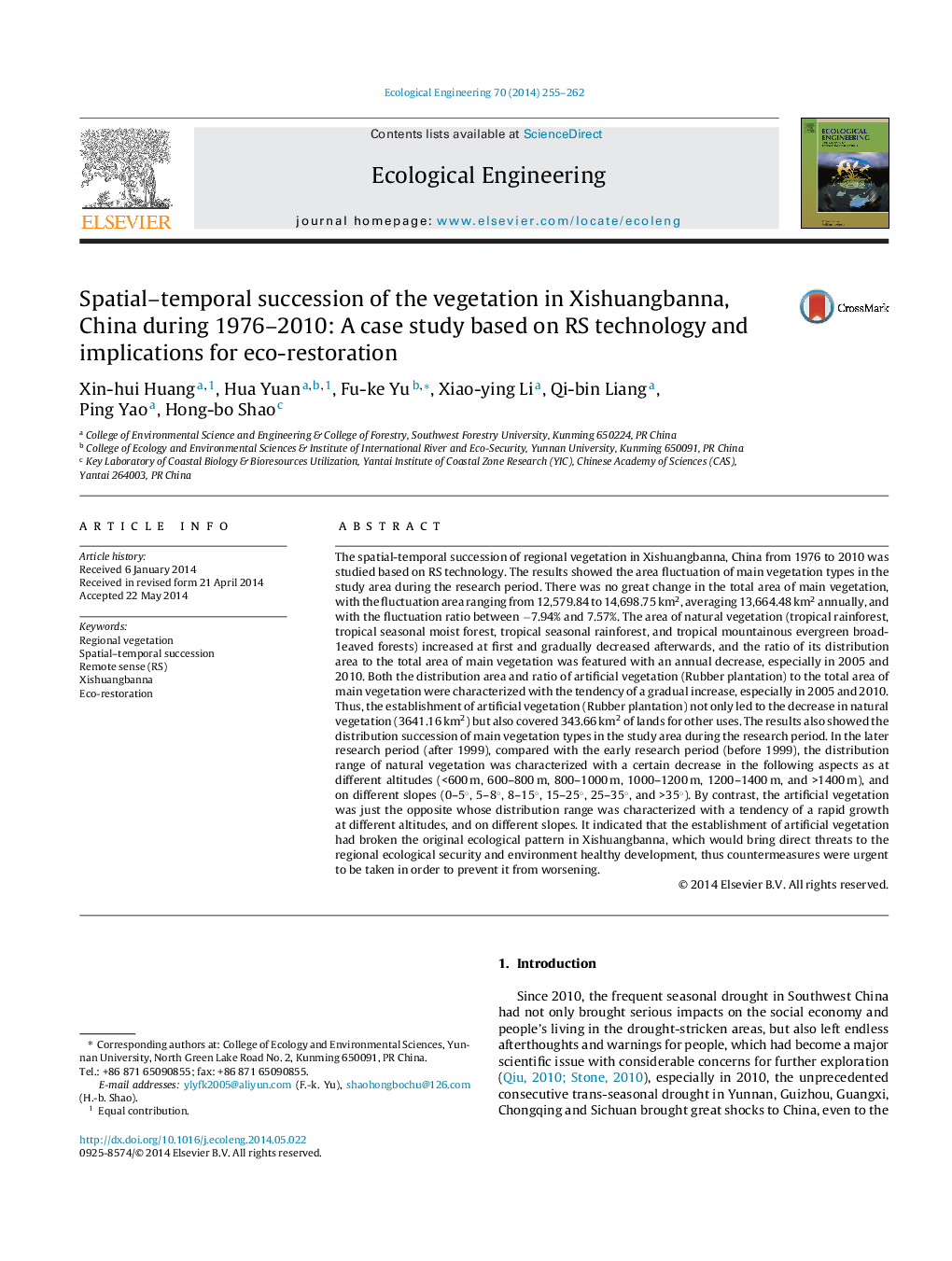| کد مقاله | کد نشریه | سال انتشار | مقاله انگلیسی | نسخه تمام متن |
|---|---|---|---|---|
| 6302157 | 1618029 | 2014 | 8 صفحه PDF | دانلود رایگان |
عنوان انگلیسی مقاله ISI
Spatial-temporal succession of the vegetation in Xishuangbanna, China during 1976-2010: A case study based on RS technology and implications for eco-restoration
دانلود مقاله + سفارش ترجمه
دانلود مقاله ISI انگلیسی
رایگان برای ایرانیان
کلمات کلیدی
موضوعات مرتبط
علوم زیستی و بیوفناوری
علوم کشاورزی و بیولوژیک
بوم شناسی، تکامل، رفتار و سامانه شناسی
پیش نمایش صفحه اول مقاله

چکیده انگلیسی
The spatial-temporal succession of regional vegetation in Xishuangbanna, China from 1976 to 2010 was studied based on RS technology. The results showed the area fluctuation of main vegetation types in the study area during the research period. There was no great change in the total area of main vegetation, with the fluctuation area ranging from 12,579.84 to 14,698.75 km2, averaging 13,664.48 km2 annually, and with the fluctuation ratio between â7.94% and 7.57%. The area of natural vegetation (tropical rainforest, tropical seasonal moist forest, tropical seasonal rainforest, and tropical mountainous evergreen broad-1eaved forests) increased at first and gradually decreased afterwards, and the ratio of its distribution area to the total area of main vegetation was featured with an annual decrease, especially in 2005 and 2010. Both the distribution area and ratio of artificial vegetation (Rubber plantation) to the total area of main vegetation were characterized with the tendency of a gradual increase, especially in 2005 and 2010. Thus, the establishment of artificial vegetation (Rubber plantation) not only led to the decrease in natural vegetation (3641.16 km2) but also covered 343.66 km2 of lands for other uses. The results also showed the distribution succession of main vegetation types in the study area during the research period. In the later research period (after 1999), compared with the early research period (before 1999), the distribution range of natural vegetation was characterized with a certain decrease in the following aspects as at different altitudes (<600 m, 600-800 m, 800-1000 m, 1000-1200 m, 1200-1400 m, and >1400 m), and on different slopes (0-5°, 5-8°, 8-15°, 15-25°, 25-35°, and >35°). By contrast, the artificial vegetation was just the opposite whose distribution range was characterized with a tendency of a rapid growth at different altitudes, and on different slopes. It indicated that the establishment of artificial vegetation had broken the original ecological pattern in Xishuangbanna, which would bring direct threats to the regional ecological security and environment healthy development, thus countermeasures were urgent to be taken in order to prevent it from worsening.
ناشر
Database: Elsevier - ScienceDirect (ساینس دایرکت)
Journal: Ecological Engineering - Volume 70, September 2014, Pages 255-262
Journal: Ecological Engineering - Volume 70, September 2014, Pages 255-262
نویسندگان
Xin-hui Huang, Hua Yuan, Fu-ke Yu, Xiao-ying Li, Qi-bin Liang, Ping Yao, Hong-bo Shao,